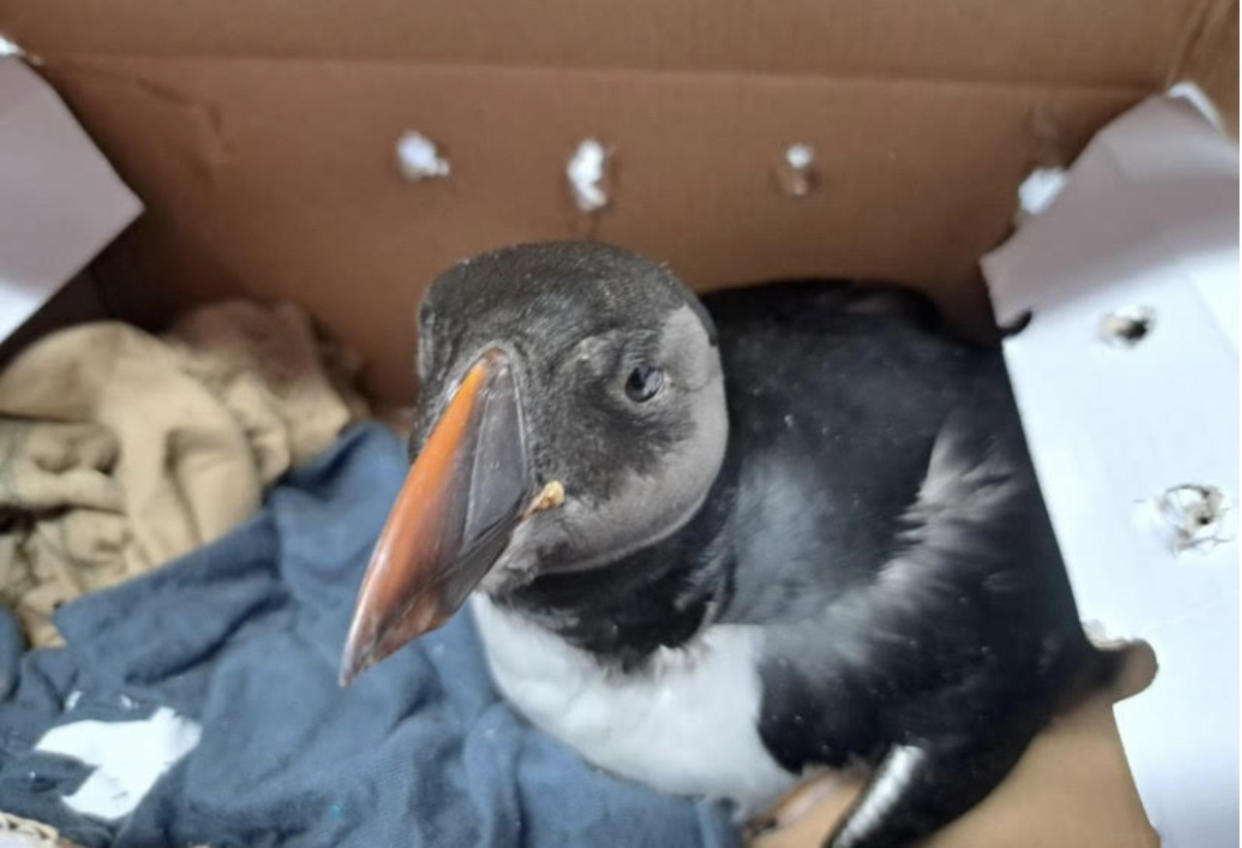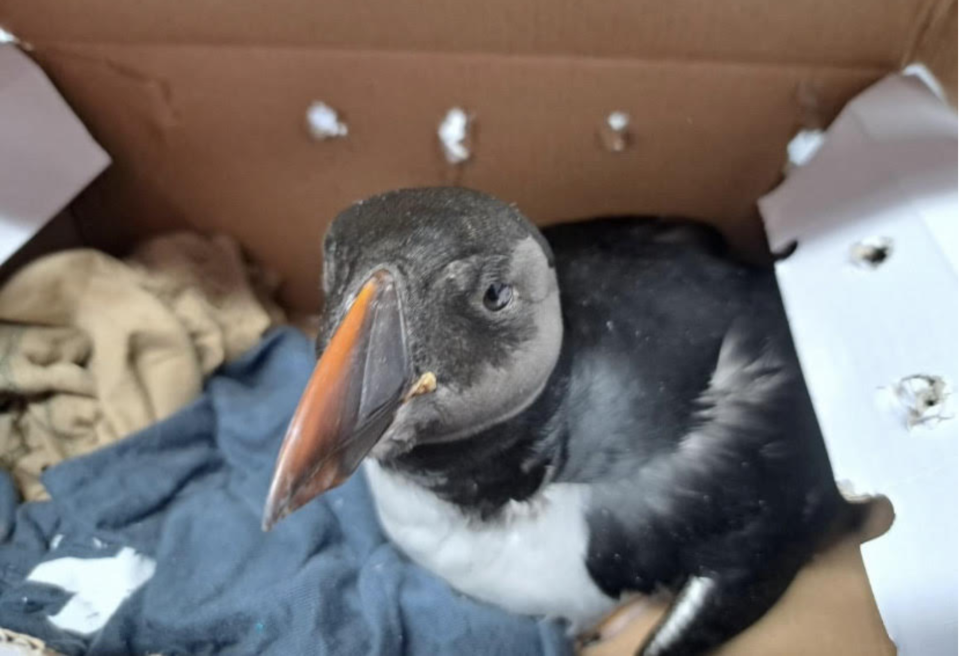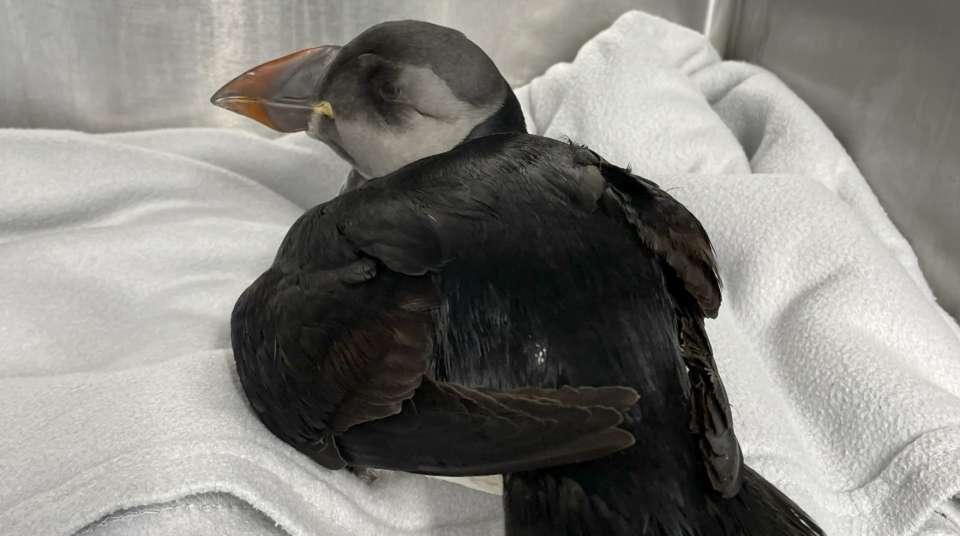Juvenile puffin gets treatment after being blown ashore by strong winds in N.S.

A juvenile Atlantic puffin was blown 30 kilometres inland during a recent windstorm that landed it in Sackville, N.S.
It got picked up and sent to Hope for Wildlife, a charitable wildlife rehabilitation and education organization located in Seaforth, N.S.
Puffins spend most of their lives at sea, and Hope Swinimer, the organization's founder, says in 25 years of doing wildlife rehab, she’s only had to look after five or six puffins.
“This year, we’ve had two," Swinimer tells The Weather Network. "I attribute that to the crazy weather, the high winds and the storms, so we do see unusual birds when we get big storms.”

Injured puffin being rehabilitated at Hope for Wildlife after being blown 30 kilometres inland (Hope for Wildlife)
Puffins aside, it used to be that if a bird strikes your window, you should give it about an hour, and if it takes flight, that’s great.
Hope says new science has emerged that’s changed that, and she wants to get the message out.
“We’ve now learned through research that no, that’s not good advice," says Swinimer. "There could be head trauma and swelling that we need to treat. So the important thing is to get that bird a little cardboard box as quick as possible and get it to us."

(Injured woodpecker in nursing at Hope for Wildlife)
Puffins usually arrive in very poor condition because they’ve come a long way, and are dehydrated and weak, and need to be treated with hydration and warmed up slowly.
“The two puffins we’ve had this year, we’ve been able to get one back to the wild, and one did not make it.”
You can learn more about what to do if you discover an injured animal at hopeforwildlife.net.

